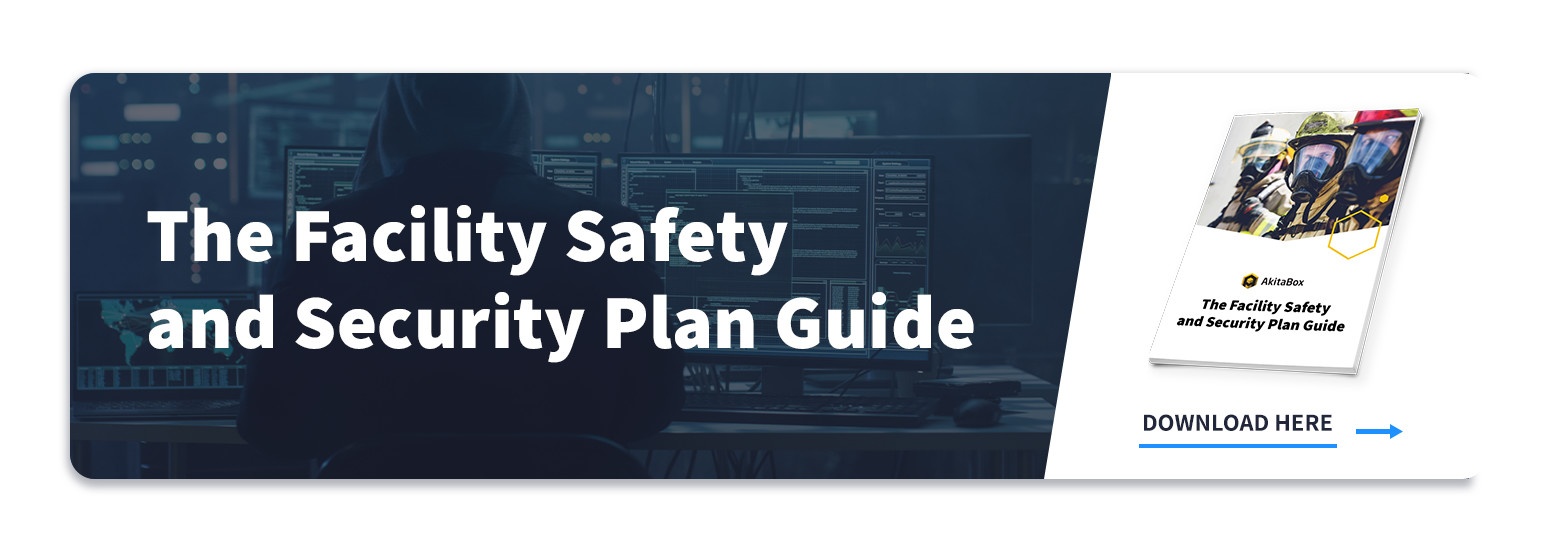Many facilities require a certain level of security to prevent theft or break-ins, but buildings are often more vulnerable than facility managers may realize. One of the best ways to discover if your facility is at risk is to perform a physical security audit. Security audits consist of visual inspections that determine how well (or not so well) current security measures are working. But just as physical security audits can highlight strong security practices in a facility, audits can also reveal major security issues. During your next security audit, be sure to look out for the following issues.
1. Dysfunctional Security Cameras and Alarms
A facility’s spaces, both inside and out, should be monitored with cameras and alarms. Security cameras that don’t work properly or aren’t placed well produce poor footage, and poor footage is difficult to monitor. Without footage, a facility’s perimeters are left unprotected. On the other hand, disarmed alarm systems leave access points vulnerable to criminal activity. Invest in state-of-the-art cameras and alarms to boost security.

2. Uncontrolled Access to a Facility
Facilities need access control to manage who may enter a facility and at what time. Without access controls, anyone, including criminals, may enter a facility and put a business at risk. Improve access control by keeping doors locked and setting up a security checkpoint in the main entrance to your facility. Protect restricted areas of your facility by giving out key cards, digital codes or passwords to approved individuals.
3. Abuse of Employee Badge Access
Organizations hope that employees don’t abuse security clearance, but all it takes is one stolen badge or leaked security information to put a business in jeopardy. Biometric authentication (such as fingerprint, retina and facial scans) is a great way for facilities to prove a person’s identity and prevent abuse of badge use. Remember to change PIN codes for employee badges often. (Want to learn more about the power of biometric security for facility management? Check out our biometrics blog here.)
4. Inadequately Trained Facility Staff
Employees need training to make smart decisions at work. Without proper instruction, workers may incorrectly guess on how to perform a task and risk their safety. Make training a crucial part of your facility’s security plan. Adequately trained personnel are more likely to respond correctly in risky situations.
5. Lack of Precaution Towards Company Assets
Do employees in your facility prop open locked doors, leave electronic devices unlocked or improperly discard confidential information? These are just a few ways employees bypass security measures for the sake of convenience. Beware – bypassed security measures can lead to security breaches, which can be devastating to an organization’s business and reputation. Encourage your team to embrace security measures and avoid shortcuts that compromise security.
6. Improper Screening of Job Candidates
Organizations conduct background checks for two reasons: to evaluate a person’s aptitude to carry out a job and to protect business integrity. Without proper background checks, facilities may hire an individual who could put their business at risk. Encourage your organization to screen job applicants before they are hired. Background checks delve into an individual’s background while also respecting privacy and complying with hiring process laws.
7. Lack of Security Follow-Up Procedures
Maintaining security is an ongoing process. Facilities should revisit security procedures annually, semi-annually or even quarterly, depending on security needs. Without proper follow-up procedures, security protocols become stagnant. For example, outdated security procedures may no longer suit a building’s current needs. Stay on top of security protocols by continually checking that business practices are in accordance with local regulations and industry best practices.
Make Your Facility More Secure
Learn innovative ways to keep your facility safe and secure with AkitaBox’s 2019 Facility Safety and Security Plan Guide. You’ll learn information on building codes, risk assessments, emergency preparation and lots more. Get your free copy here.